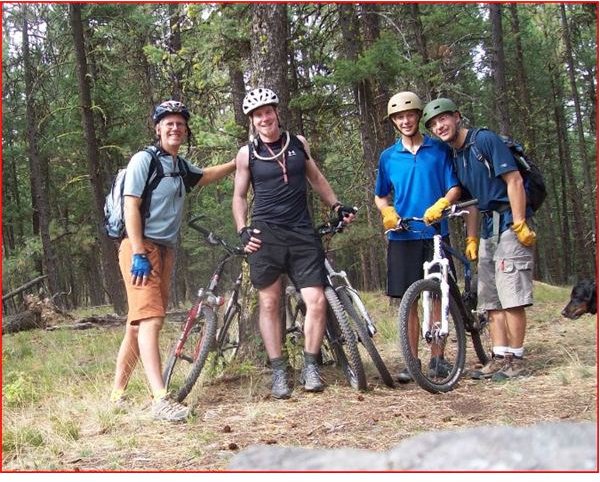Mountain Biking Tips That Improve Riding Expeditions
Bring the Right Mind to the Trail
The mountain biking tips provided here are for the initiated to intermediate level biker looking to fine tune their skills so that they are well conditioned to handle more demanding trails and uphill endeavors. When approached properly, this outdoor sport can become so much fun that you’ll almost forget that you’re also engaging in a rigorous fitness regimen. Get your confidence up on the flat top with increasingly gradual inclines and then you’ll be ready for the rocky uneven and sometimes unpredictable terrain found on many of the exciting single track that awaits you and your two-wheeled steed.
Attitude is everything they say and it’s especially important in mountain biking. You have to be safe while at the same time accept the level of risk and not let the fear of all the things that could go wrong rule you. That’s why you should read Exercise and Stress Control: Relaxed Intensity to learn about a very beneficial mind set to have while engaging in this bumpy, rigorous sport which demands a great deal from your body and mind in each and every moment. Essentially this sport can be a shortcut to the spiritual wisdom of the ages; living in the now.
To keep from careening into trees, toppling over the handlebars, or any other conceivable mishap you must adopt the kind of in the zone concentration that allows you to ride trouble free (unless you look forward to pushing that edge and don’t mind an inevitable crash or two) and have fun because that should be the whole point aside from a great workout. That’s what the relaxed intensity proffered in that piece can do for you. Utilize the power of visualization. Go through the fundamentals in your mind on a trail you’ve ridden before the next ride. Handling conditions on the trail starts with believing that you can in your head first.
Mountain Biking Tips for Physically Mastering your Rides
How to Ride on Rough Terrain is a good read for those of you just starting out and also an excellent brush up for you intermediates and beyond. This outdoor sport really is a lot of fun, so much so that you may even forget that you’re working out to. A beginner doesn’t want to start out tackling those steep uphill climbs right off the bat but rather work your way up to them because it will be a leg burner and you’re using muscles that you don’t often use. If it’s no fun at all you’ll be less inclined to stick with it and uncover the splendor that comes with practice.
Even if you’re a runner in really good shape a mountain bike ride on really hilly terrain might burn you out faster because of two factors. The first being that the hill requires spurts of furious energy in pedaling akin to a sprint. The second reason may be the result of you being unfamiliar with how to utilize the gears with the best efficiency. Experience with the gears, anticipating the angle of the grade as it relates to how fast you can and should be pedaling comes with experience.
In the beginning, you might not shift in time and therefore moving the pedal will take an extreme effort which isn’t good for the rider or the bike (this is a fast way to harm your bike too). If I cover that more than once in this series it’s because you don’t want to have a bad experience out there if you can avoid it. It’s no good for your bike or your mental and physical being. Then again if you do, look at it as a good lesson. <strong>The ABC-OF-Mountain Biking</strong> is a great resource for more helpful tips.
Your best shock absorbing position is going to be everything bent and loose meaning a slight bend to your elbows, your bum off the seat with your feet on the pedals parallel to each other in the 3 O’clock and 9 O’clock position. If you remain locked, rigid, and tall on the seat when approaching rocks and anything else bumpy it can be a recipe for your standard yard sale where you find yourself splayed on the ground wondering what happened. Bumpy declines are more precarious by nature so you want to lean back a little keeping your center of gravity lower with your bum further back on the seat without putting a lot of your weight on it or in the aforementioned position on the more rugged terrain. We’re not quite through yet; the next couple of articles will round out your education on this electrifying outdoor opportunity reminding you of the joy that awaits you and your bike on the trails near you.
Sources:
Big Sky Cyclery, Helena MT <strong>https://www.bigskybikes.com/</strong>
ABC-OF-MOUNTAIN BIKING <strong>https://www.abc-of-mountainbiking.com</strong>
This post is part of the series: Intermediate Mountain Biking
This series is for the mountain bikers with basic skills looking for information and insights to improve their abilities in order to better enjoy this fitness and recreational activity. Read and then you’ll ride away with a whole new attitude.
